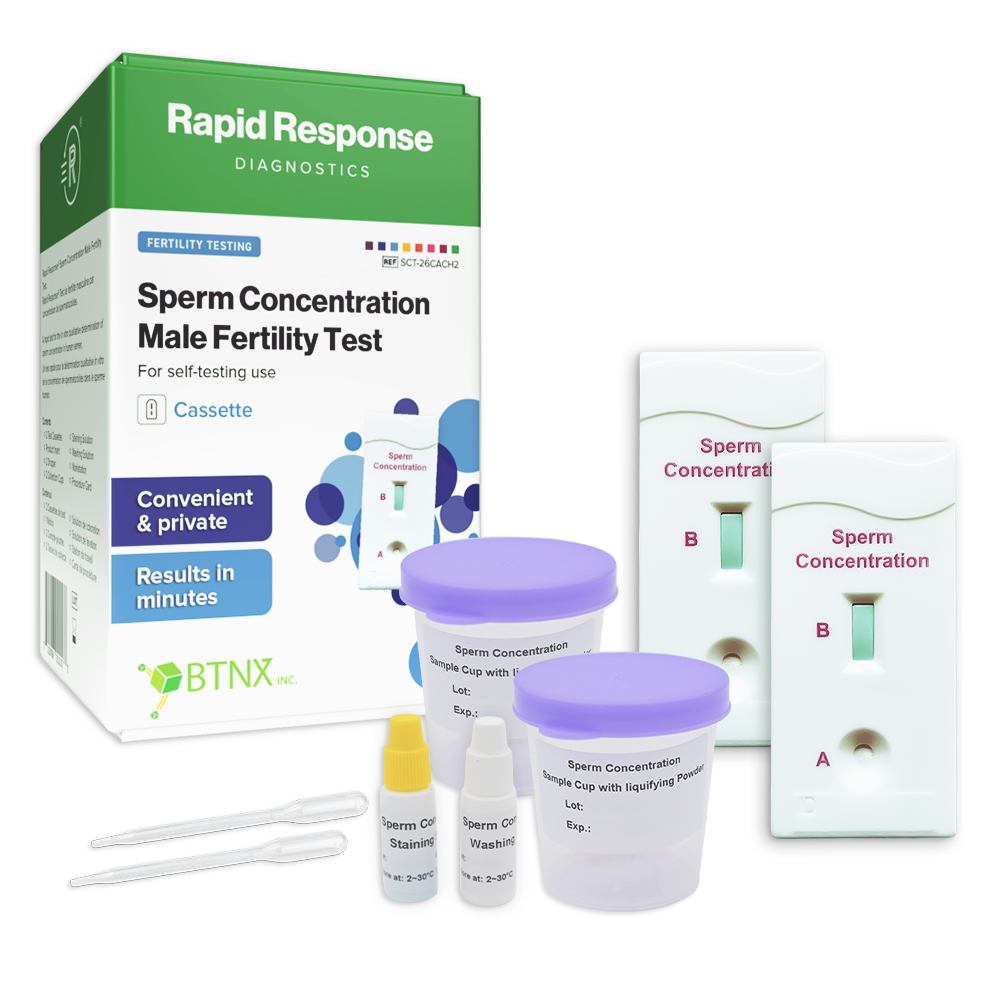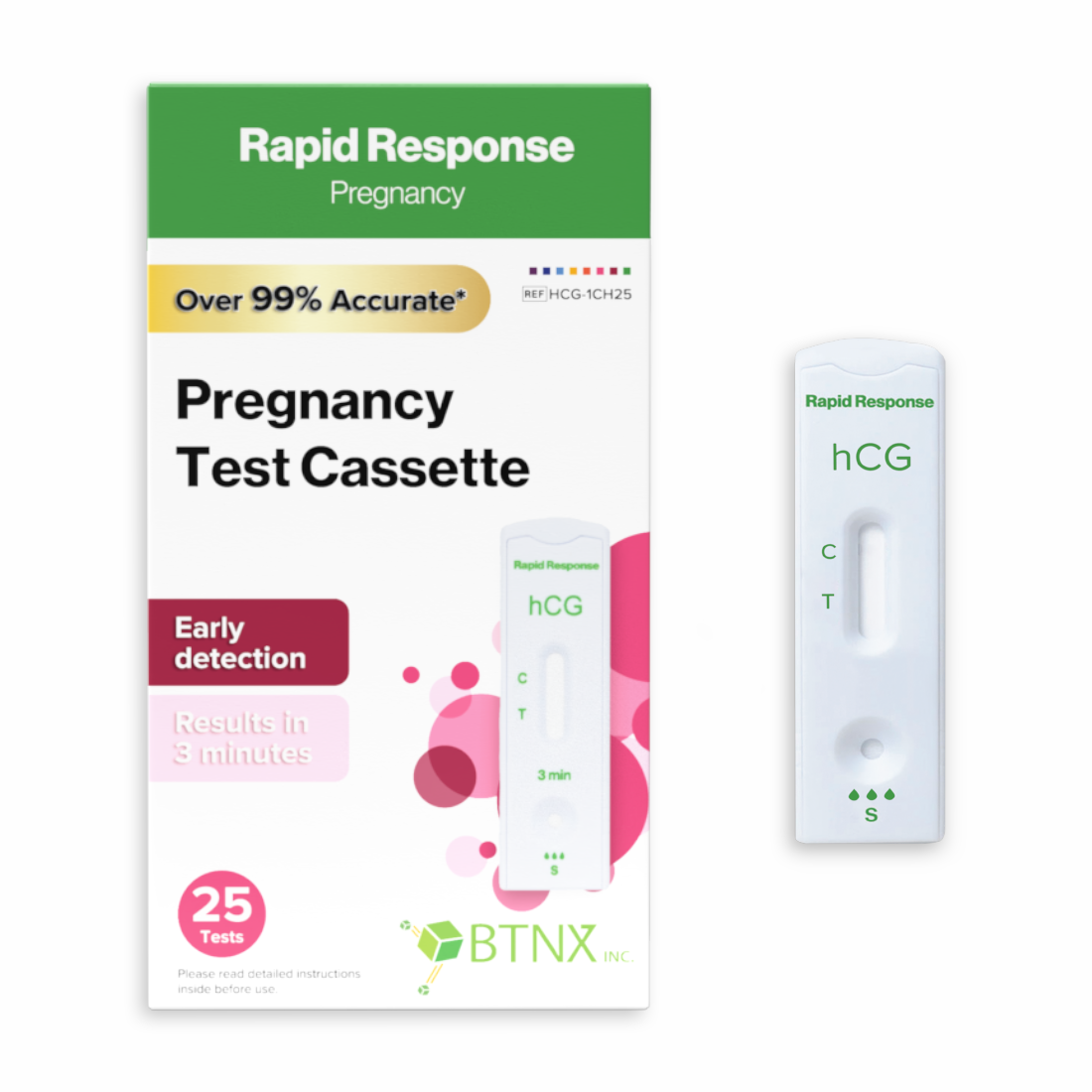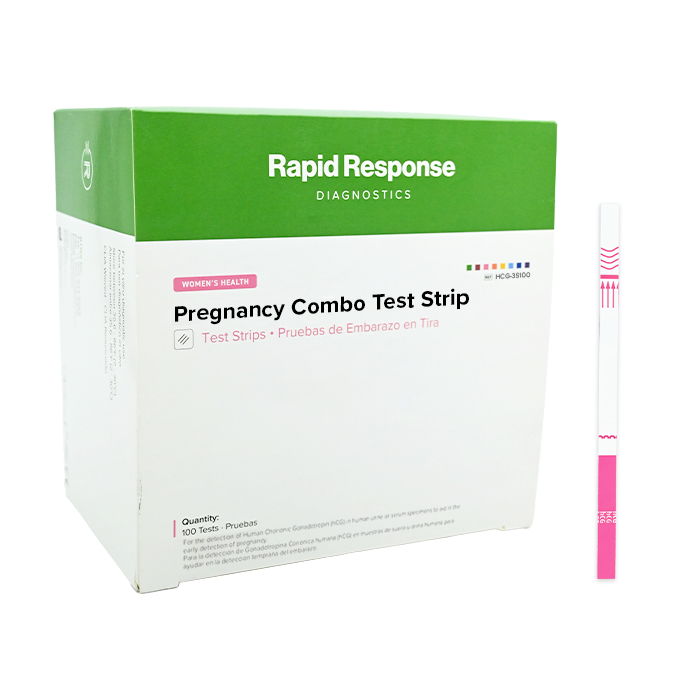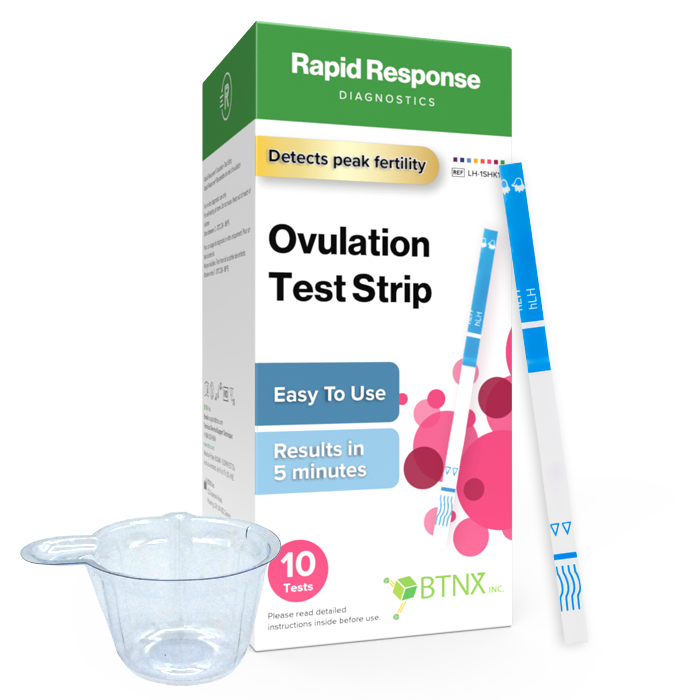Fertility Testing

BTNX offers an array of Women’s Health products tailored to provide healthcare professionals with
easy-to-use solutions for the unique health care and diagnostic needs of women.

Format: Cassette
Kit Size: 2 Tests/Kit

Format: Midstream
Kit Size: 3 Tests/Kit

Format: Strip
Kit Size: 50 Tests / Kit

Format: Strip
Kit Size: 100 Tests/ Kit

Format: Strip
Kit Size: 5 Tests/Kit

Format: Strip
Kit Size: 10 Tests/Kit

Format: Strip
Kit Size: 50 Tests/Kit

Format: Strip
Kit Size: 100 Tests/Kit

Format: Strip
Kit Size: 5 Tests / Kit

Format: Strip
Kit Size: 10 Tests / Kit

Format: Cassette
Kit Size: 100 Tests / Kit

Format: Cassette
Kit Size: 50 Tests / Kit

Format: Cassette
Kit Size: 25 Tests / Kit

Format: Cassette
Kit Size: 10 Tests / Kit

Format: Cassette
Kit Size: 5 Tests / Kit

Format: Cassette
Kit Size: 5 Tests / Kit

Format: Cup
Kit Size: 10 Tests / Kit

Format: Cassette
Kit Size: 25 Tests / Kit

Format: Cassette
Kit Size: 50 Tests / Kit

Format: Cassette
Kit Size: 100 Tests / Kit

Kit Size: 2 Tests / Kit

Format: Midstream
Kit Size: 3 Tests / Kit

Format: Midstream
Kit Size: 1 Test / Kit

Format: Midstream
Kit Size: 1 Test / Kit

Format: Cassette
Kit Size: 25 Tests / Kit

Format: Cassette
Kit Size: 50 Tests / Kit

Format: Strip
Kit Size: 50 Tests / Kit

Format: Strip
Kit Size: 100 Tests / Kit

Format: Cassette
Kit Size: 25 Tests / Kit

Format: Cassette
Kit Size: 50 Tests / Kit

Kit Size: 1 Pair / Kit

Format: Strip
Kit Size: 10 Tests/Kit

Format: Strip
Kit Size: 20 Tests/Kit

Format: Strip
Kit Size: 50 Tests/Kit

Format: Strip
Kit Size: 50 Tests/Kit

Format: Strip
Kit Size: 20 Tests/Kit

Format: Strip
Kit Size: 10 Tests/Kit

Format: Cassette
Kit Size: 25 Tests/Kit

Format: Strip
Kit Size: 50 Tests/Kit

Format: Cassette
Kit Size: 25 Tests/Kit

Format: Strip
Kit Size: 50 Tests/ Kit
Pregnancy Test Strips
What are pregnancy test strips?
A pregnancy test strip is a piece of plastic coated with chemicals that react with human chorionic gonadotropin (hCG). When dipped in urine, if hCG is present, multiple colored lines will appear on the strip, indicating a positive result.
How do pregnancy test strips work?
The Rapid Response Pregnancy Test Strip (Urine) detects human chorionic gonadotropin through visual interpretation of color development on the strip. Anti-hCG antibodies are immobilized on the test region of the membrane and anti-mouse antibodies on the control region. During testing, the specimen reacts with anti-hCG antibodies conjugated to colored particles and precoated onto the sample pad of the strip. The mixture then migrates through the membrane by capillary action and interacts with reagents on the membrane. If there is sufficient hCG in the specimen, a colored band will form at the test region of the membrane. The presence of this colored band indicates a positive result, while its absence indicates a negative result. The appearance of a colored band at the control region serves as a procedural control, indicating that the proper procedures for the test have been performed and that the test is working as intended.
During testing, the test strip is dipped in urine for at least 10-15 seconds. The test strip is then placed on a non-absorbent flat surface, and in 3 minutes, results will appear.
When is the best time to take a pregnancy test with a strip and can I use a pregnancy test strip at any time of day?
Although urine specimen from any time of day can be used, first morning urine specimens are preferable as they contain the highest concentration of hCG.
Are pregnancy test strips accurate?
Our Rapid Response Pregnancy Test Strips have an accuracy of >99%.
How soon can I take a pregnancy test after a missed period with a strip?
The Rapid Response Pregnancy Test Strip is capable of detecting pregnancy as early as 1 day after the first missed menses.
Can I get a false positive or false negative result with a pregnancy test strip?
Certain factors such as medications or very recent miscarriages may affect results.
When hCG levels are below the minimum detection level of 20 mIU/mL, a false negative result may be obtained.
Do all pregnancy test strips require the same method of use?
Pregnancy test strips are often used to test urine samples but depending on the test format, the method of use may differ. Test strips require dipping the strip in urine while a midstream test can be placed in a urine stream or dipped. A test that involves a test cassette requires urine to be collected in a pipette, which is then added to the sample well of the cassette to run the test. Some pregnancy test, such as the Rapid Response Pregnancy Combo Test Cassette may also be used to test serum for hCG content. These test are typically used by medical professionals only.
Where can I purchase pregnancy test strips?
Contact our Sales Representative to purchase Rapid Response tests.
What should I do if I get a positive result on a pregnancy test strip?
Visit a clinic and talk to a healthcare provider for a follow-up pregnancy test and advice on next steps.
Taking a Pregnancy Test
When to Get a Pregnancy Test?
• After missing a period is the best time to get tested, though some tests can detect hCG a few days before an expected period.
• If pregnancy symptoms are experienced.
• A few days before an expected period with some highly sensitive tests.
How to get Pregnancy Tests?
Pregnancy test can be purchased over-the-counter at drugstores, pharmacies, or online. They can also be conducted at healthcare facilities. Contact our Sales Representative to purchase Rapid Response tests.
Can You Take the Test at Home?
Yes, Rapid Response Pregnancy Test kits authorized for at-home OTC use can be taken at home.
About the Results & Interpreting Results
• Positive: Typically, two lines or a specific symbol appears.
• Negative: Only the control line appears.
• Invalid: If no lines appear or if the control line doesn’t appear, the test results are not valid. Retesting should be performed.
Find the best solution for your needs
Our sales representatives can help set you up for success! Contact our team today!
Our Rapid Response Pregnancy Test are over 99% accurate when used correctly.
Very dilute urine specimens exhibiting low specific gravity may not contain representative levels of hCG. If pregnancy is still suspected after a negative result, a first morning urine sample should be obtained 48-72 hours later and tested.
Very low levels of hCG (less than 50 mIU/mL) are present in urine or serum shortly after implantation. However, because a significant number of first trimester pregnancies terminate for natural reasons, a test result that is weakly positive should be interpreted in conjunction with other clinical and laboratory data.
A number of conditions other than pregnancy, including trophoblastic disease and certain non-trophoblastic neoplasms including testicular tumors, prostate cancer, breast cancer, and lung cancer, cause elevated levels of hCG (>10 mIU/mL). Therefore, the presence of hCG in urine as determined by using the Rapid Response Pregnancy Tests should not be used to diagnose pregnancy unless these conditions have been ruled out.
When hCG levels are below the minimum detection level of the test, a false negative result may be obtained. If pregnancy is suspected after a negative result, a first morning urine specimen should be collected 48-72 hours later and tested. If pregnancy is suspected and the test continues to produce negative results, see a physician for further diagnosis.
As with all diagnostic tests, a confirmed pregnancy diagnosis should only be made by a physician after all clinical and laboratory findings have been evaluated.
Medications may affect results of a pregnancy test. Always read the product insert and consult with a healthcare provider.
The intensity of colour in the test region (T) may vary depending on the concentration of analytes present in the specimen. Therefore, any shade of colour in the test region should be considered positive. The Rapid Response Pregnancy Tests are qualitative tests only and cannot determine the concentration of analytes in the specimen.
Due to factors like certain medications or very recent miscarriages may affect results.
When hCG levels are below the minimum detection level of 20 mIU/mL, a false negative result may be obtained.
Some tests claim to work as early as 5 days before the expected period, but waiting until the day of the expected period increases accuracy. hCG levels rises very rapidly exceeding 100 mIU/mL by the first missed menstrual period. Very low levels of hCG may not be detected by the test.
Pregnancy tests are reliable tools to determine pregnancy. If there’s uncertainty about results or if further confirmation is needed, consulting with a healthcare provider is recommended.
A negative result on a pregnancy test may mean you are not pregnant but it may also mean the level of hCG in the urine test might not be high enough to be detected by the test. If you test negative but think you may still be pregnant after your missed period, re-test with first morning urine 2-3 days later. If you continue to test negative but think you are pregnant, see your doctor.
A number of conditions other than pregnancy, including trophoblastic disease and certain non-trophoblastic neoplasms including testicular tumors, prostate cancer, breast cancer and lung cancer, cause elevated levels of hCG (>10 mIU/mL). Therefore, the presence of hCG in urine as determined by using the Rapid Response Pregnancy Tests should not be used to diagnose pregnancy unless these conditions have been ruled out.
You may get a result that indicates you are pregnant but find out that you are not pregnant. This may be due to natural loss of pregnancy early in the first trimester, which is extremely common. If you get unexpected results, speak to your doctor.
As with all diagnostic tests, a confirmed pregnancy diagnosis should only be made by a physician after all clinical and laboratory findings have been evaluated.

 Canada
Canada